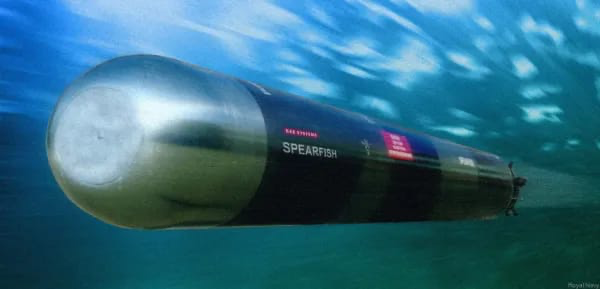Avoiding Automation To Keep Your Job
Automation is scary. Right back at the start of my career, I automated something that was canned the moment I left as folks were afraid of losing their job.
Join the DZone community and get the full member experience.
Join For FreeWill technology, automation, or AI take our jobs? This is something we hear a lot at the moment - but it’s always been this way. Right back at the start of my career, I automated something that was canned the moment I left as folks were afraid of losing their job.

Some background to why I am writing this post. I was reading a tweet today from Michelle Bakels that was a cautionary tale from her enterprise days.
I’m not going to dump the entire text here - go read the tweet as it’s fascinating, but the TL;DR is folks are scared of telling IT what they do in case it is automated, and they are out of a job.
Will Technology Replace?
This is something that is constantly talked about in the tech world, though it feels like it has really come to the surface recently with the rise of AI. Will technology replace us? Will AI take our jobs (one of the catalysts of the recent SAG-AFTRA strikes in the TV and movie industry)? Will self-driving cars replace taxis? Will cars replace horses? Will movable type replace handwritten books? The list goes on.
Rather than dive into this discussion, I thought it would be fun to tell a story of my own - of how I automated something during an internship and how it got killed the minute I left, as folks were worried it would replace their jobs.
Jim Gets an Internship at Marconi
This was just after I graduated in 1999 — I started working on a summer internship at Marconi (playing the mamba, listening to the radio) in their underwater weapons division. This was probably the start of my route toward being a pacifist and hating all weapons and the military-industrial complex.
My job was to analyze torpedo data. Marconi built these $1M Spearfish torpedoes that didn’t work very well, and they would do trials on them in various parts of the world (Faslane in Scotland, deep water testing in the Caribbean). The testing torpedoes would record data about their decisions, as well as telemetry such as depth, speed, location, etc. They would also record radar data and what they identified in the way of ships. The goal was to drop a torpedo in the water and send it to a ship, then gather the data afterward to see if it did the right thing. It is not quite testing in production as the torpedoes had no explosives, but it is the closest you can get.
The Reporting Process
Once the trials were over, someone had to analyze the results, and this was the team I was on. The process was horribly manual:
- Remotely log into a mainframe and request a printout of the data from the torpedo trial as a hex dump on green and white continuous feed paper.
- Work through the hex dump using highlighters to ‘read’ what was happening. Hex codes marked the steps in the output, and each one had many bytes of information. For example, one hex code was for direction, and you knew that meant the next X bytes were the direction information, and the next character was the next set of data. Very laborious and error-prone
- Enter all this data into an Excel spreadsheet showing each step
- Extract location and direction data and put this into another page on the spreadsheet
- Generate a chart to show the torpedo’s movements
- Create a Word document with all the steps that the torpedo took, along with the charts.
- Actually, do the analysis and look for issues for the software teams to investigate
(There are probably more steps that I have forgotten as it was 24 years ago)
Apart from the last step, which actually used your brain, the rest of the process was repetitive and dull. It could easily take a week or two to get a report ready to be able to do the final analysis step. And there was a whole team doing this, most of them ex-Ministry of Defense folks who just wanted to get their pension.
In Comes Jim With an Idea!
So I had an idea! I was an engineer, after all. I could automate all the things, I’d be the hero, save the company money, and everyone would love me.

So, I set about doing this whilst I was working on a report.
Automate All the Things
Firstly, I had to automate getting the data — can’t do this from a printer. Luckily, the mainframe that I logged into to print could just dump the data onto the screen. How could I get this in a way I could do things with it? Excel!
So, I wrote some good old VBA in Excel to connect over SSH to the mainframe and download all the data. I had one control sheet that you enter the trial number into, a button to click, and away it would go, downloading the data and filling out a second sheet.
Next was replacing the highlighter pen! Easy to do in Excel: work through each cell to get the action for each step, highlight the cells as if I were using a highlighter pen and paper, and extract the data for each action.
Once I had the actions, it was easy to convert from the hex codes to the steps information that was wanted. Same with locations — easy to extract and plot the chart.
Finally, it was time to create a Word doc — and VBA can do this nicely.
The Result
All in all, I spent about four weeks on this and was able to generate a report ready for analysis in about 10 minutes, as opposed to 1-2 weeks. I packaged this as an add-in, so anyone could use it — just add the add-in, enter the trial number, and away it went, spat out the doc.
I even gave it a cool name: Spearfish Trials Analysis Report Writers Automated Reporting Suite - or STAR WARS for short (this was a few months after Episode 1 came out, after all).
I was impressed, and I could save everyone time!
The Reception
Everyone hated it. Simple as that. I was told there was no way it could be better than a human, and one of the top report writers challenged me to produce a better report. In 10 minutes, I had one. In four days, she had her version, and she’d made some mistakes — which made her hate it (and me) even more.
After I left, it was deleted, and everyone forgot about its existence. It took me a while to figure out why — everyone was afraid. This one spreadsheet could replace almost the entire team of 7 people. You’d just need this spreadsheet and one person to do the analysis, as the bulk of the job was manually processing reports. I could have put six people out of work in just four weeks.
Regardless of how you feel about waste in enterprises, this was six humans with families who had houses, mortgages, rent, and bills, who needed to eat and to live. The lives of six families could have been destroyed with one spreadsheet.
Conclusion
Yes, automation is coming. Yes, technology can solve so many things. Yes, in theory, if a job is replaced by automation, then folks can focus their knowledge and energy on solving bigger problems. But the reality is business is run by people who want to make as much money as possible, so automation is a way they can cut jobs and boost shareholder value, whatever that is (I’m guessing making rich folks richer).
This is not always the case, and this is a very cynical and dystopian view, but in most cases, this is the truth. Even in the high-paying tech world of multi-trillion dollar companies, folks are dropped in an instant to boost share prices.
So, it’s not surprising folks are worried about computers taking their jobs. If we are in the throes of an AI revolution, then maybe we need to really push the conversations around universal basic income and tax large corporations and billionaires to pay for it.
Published at DZone with permission of Jim Bennett. See the original article here.
Opinions expressed by DZone contributors are their own.



Comments